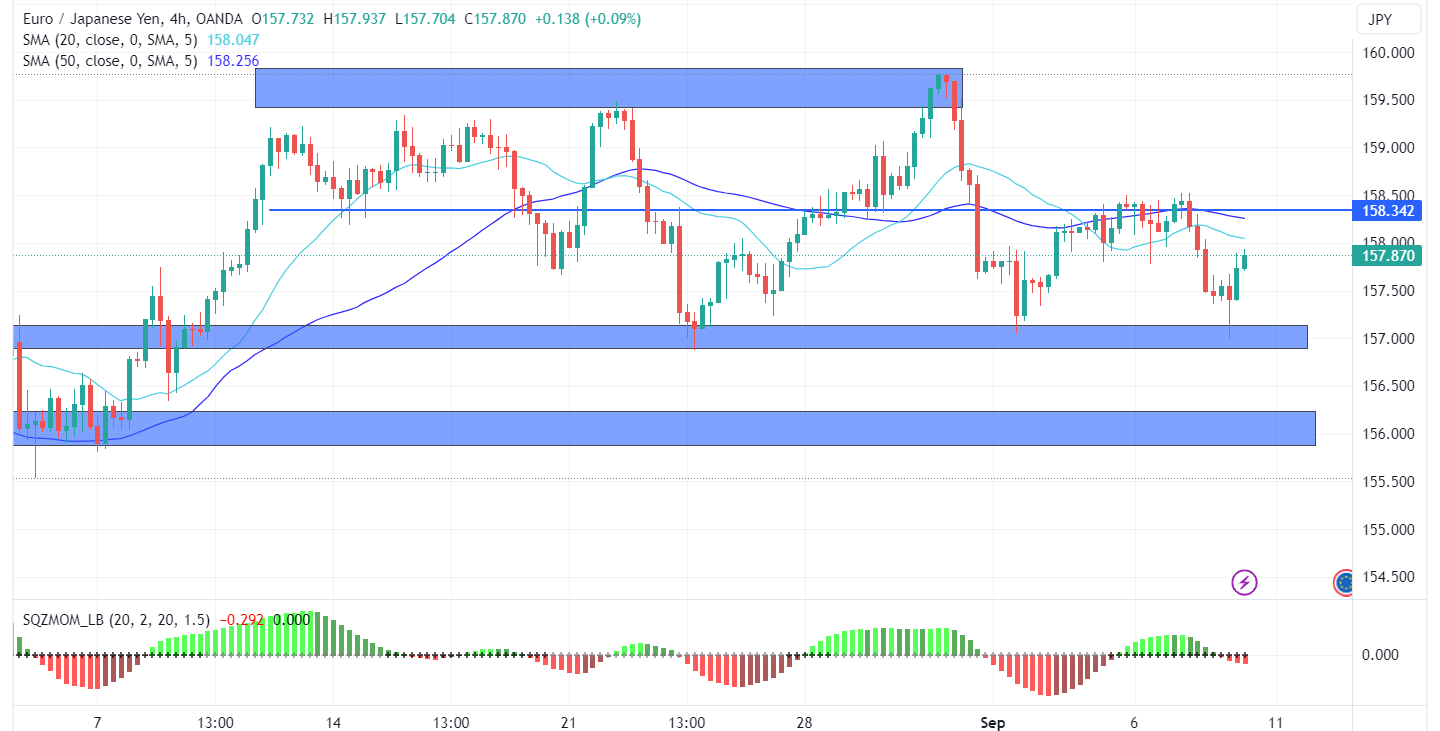Earlier today, the euro-to-Japanese-yen exchange rate continued to decrease, following a pattern of random movements that have been prevalent since the end of June. After reaching its highest value in a month at around 159.85 yen, the exchange rate fell slightly due to a marginal decrease in German consumer price inflation. In August 2023, the inflation rate was 6.1% on an annual basis, which is a small drop from the previous month’s rate of 6.2%. It is also the same as the 14-month low recorded in May. However, even though the core inflation rate, which excludes food and energy, remained unchanged, both rates are still above the European Central Bank’s target of 2.0%. Additionally, consumer prices increased by 0.3% on a monthly basis in August, which is the same as the previous month.
On the other hand, yesterday’s final reading indicated that the eurozone economy only grew by 0.1% in the second quarter compared to the previous period, which is below expectations. The initial reading had forecasted an expansion of 0.3%.
Meanwhile, European stock markets headed towards a higher open today as risk sentiment improved, while investors continued to evaluate the economic outlook and interest rates globally. Meanwhile, traders remain cautious as the latest batch of economic data pointed to a strong US economy, giving the Federal Reserve some room to remain restrained. DAX and Stoxx 600 futures rose.
Regarding data from Japan,
Japan’s services sector sentiment fell to 53.6 in August 2023 from 54.4 the previous month, lower than market expectations of 54.4, and a measure of business trends also fell due to a decline in non-manufacturing activity and employment. The economic expectations index fell 2.7 points to its lowest level in six months at 51.4 amid expectations that the economy will recover moderately due to the impact of price pressures, and accordingly, the Nikkei 225 index fell by 407 points or 1.23 percent, declining for the second session in a row with… Investors reacted to a report showing that Japan’s second-quarter GDP growth expanded by 4.8%, which was down from the 6% growth initially estimated and below market expectations for a 5.5% expansion.
Looking at the charts, we find that the pair is dominated by sideways movement for the second month in a row, settling in its trading below the moving averages for a period of 20 and 50 days, with increasing selling pressure on momentum indicators for a four-hour time interval. The pair is now trading in a corrective movement to retest the equilibrium levels of that movement. Randomly around the 158.35 yen levels, the pair is likely to retreat again around those levels to target the support around 157 again, and then in the event of a break, it will target the next support levels around 156 yen.


